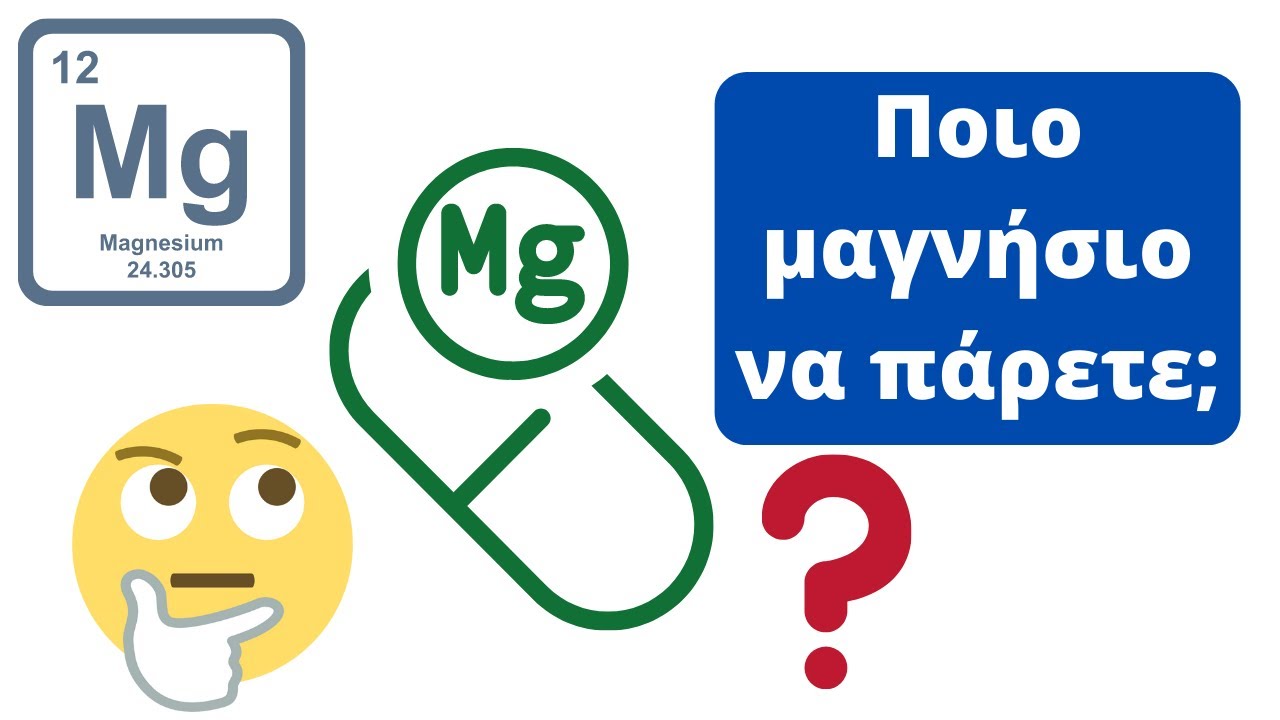Κείμενο
Από τις εξετάσεις που μου φέρνουν για να δώσει το ιατρείο συχνά βλέπω ότι πολλοί πελάτες μου φέρουν εξετάσεις που δείχνουν τα επίπεδα μαγνησίου στον όρο, Δηλαδή στο αίμα μετά από εξέταση αίματος. Το εντυπωσιακό είναι ότι ενώ οι μελέτες τονίζουν ξανά και ξανά ότι μόλις ένα μικρό ποσοστό των ανθρώπων λαμβάνει επαρκή ποσότητα μαγνησίου από τη διατροφή του, εγώ δεν έχω δει ποτέ εξετάσεις που να δείχνουν ότι το μαγνήσιο στο αίμα είναι χαμηλότερο από το φυσιολογικό. Ο κύριος λόγος που συμβαίνει αυτό είναι από το φυσιολογικό. Ο κύριος λόγος που συμβαίνει αυτό είναι από το πραγματικό μαγνήσιο στον οργανισμό. Αυτό δεν είναι κάτι πρωτοφανές, αφού αυτό ισχύει και στο ασβέστιο. Δηλαδή δεν είναι δυνατόν να ξέρουμε πόσο ασβέστιο υπάρχει στα οστά μετρώντας το ασβέστιο στο αίμα. Για αυτό βλέπουμε άτομα με πολλά οστεοπορωτικά κατάγματα και βαριά οστεοπόρωση να έχουν επάρκεια ασβεστίου στο αίμα. Επιστρέφοντας στο μαγνήσιο, πρέπει Αρχικά να πούμε ότι το 60% του μαγνησίου στο σώμα μας υπάρχει στα δόντια και στα οστά, ενώ σχεδόν το υπόλοιπο 40% υπάρχει μέσα στα κύτταρα. Υπολογίζεται ότι στο αίμα υπάρχει λιγότερο από το 0,3% του μαγνησίου που υπάρχει στο σώμα, Άρα μετρώντας το Μαγνήσιο εκεί είναι αδύνατον να καταλάβουμε πόσο μαγνήσιο υπάρχει στο σώμα εκτός αν υπάρχει εξαιρετικά βαριά έλλειψη μαγνησίου. Μόνο σε αυτή την περίπτωση είναι χρήσιμη αυτή η εξέταση. Όμως το Μαγνήσιο είναι αναγκαίο για πολλές λειτουργίες Για αυτό πρέπει να υπάρχει ένας τρόπος να ξέρουμε ότι στον οργανισμό υπάρχει επάρκεια σε μαγνήσιο. Ένας εναλλακτικός και κάπως καλύτερος τρόπος για να μετρήσουμε Εάν τα επίπεδα μαγνησίου στο σώμα είναι επαρκή είναι η αναλογία με το ασβέστιο. Tο πιο πιθανό είναι ότι εκτός από το μαγνήσιο, στις εξετάσεις θα βρείτε και το ασβέστιο του όρου. Σε αυτή την περίπτωση το μόνο που έχετε να κάνετε είναι να διαιρέσετε το ασβέστιο δια το μαγνήσιο και να βγάλετε την αναλογία. Αν το αποτέλεσμα είναι ανάμεσα στο 3,91 και στο 4,7, το ότι η αναλογία είναι καλή και θεωρούμε ότι καταναλώνετε

επαρκή ποσότητα μαγνησίου. Αν η αναλογία ξεπερνάει το 4,7 τότε θεωρούμε ότι η κατανάλωση μαγνησίου είναι μικρή και θα πρέπει να την αυξήσετε. Ας δώσουμε μερικά παραδείγματα. Βλέπετε ότι στις εξετάσεις σας το ασβέστιο είναι 9 και το μαγνήσιο είναι 2. Το μόνο που πρέπει να κάνετε είναι να πάρετε ένα κομπιουτεράκι και να διαιρέσετε 9 δια του 2. Το αποτέλεσμα είναι το 4,5 που είναι ανάμεσα στο φυσιολογικό εύρος που έχουμε ορίζει ότι είναι μέχρι το 4,7. Ας δούμε ένα άλλο παράδειγμα. Ας υποθέσουμε ότι το ασβέστιο είναι 9,5 και το μαγνήσιο είναι 2. Κάνοντας τη διαίρεση φαίνεται ότι η αναλογία είναι 4,75 και άρα περισσότερο από το 4,7 που έχουμε ορίσει ως αποδεκτή, άρα πρέπει να αυξήσετε την κατανάλωση μαγνησίου. Ψάξτε Να βρείτε τις τελευταίες εξετάσεις αίματος που έχετε. Είναι πολύ πιθανόν να βρείτε μέσα και το μαγνήσιο και το ασβέστιο. Αφιερώστε τον ελάχιστο χρόνο που είναι αναγκαίος για να βγάλετε το αποτέλεσμα και βρείτε με αρκετή αξιοπιστία εάν η διατροφή σας έχει επάρκεια σε μαγνήσιο. Αυτή από την άλλη που δεν εντυπωσιάζονται με αναλογίες ημίμετρα και θέλουν να φτάσουν λίγο πιο κοντά στη μέτρηση μαγνησίου με μεγαλύτερη αξιοπιστία, μπορούν να μετρήσουν το μαγνήσιο μέσα στα κύτταρα. Είπαμε νωρίτερα ότι το 40% του μαγνησίου στον ανθρώπινο οργανισμό βρίσκεται μέσα στα κύτταρα και υπάρχει ένας άνθρωπος με εξέταση αίματος να μετρήσουμε το Μαγνήσιο μέσα στα κύτταρα. Τα κύτταρα που είναι πιο προσιτά στην εξέταση αίματος είναι τα ερυθροκύτταρα, τα κύτταρα δηλαδή που υπάρχουν στο αίμα. Είναι λοιπόν εφικτό σε κάποια διαγνωστικά κέντρα στην Ελλάδα να εξετάσετε το ενδοκυττάριο μαγνήσιο που είναι ένας πιο αξιόπιστος τρόπος για να βρίσκουμε το μαγνήσιο στον οργανισμό. Για να βρείτε ποια κέντρα κάνουν αυτή την εξέταση κοντά στην περιοχή που μένετε ή δουλεύετε, δεν έχετε παρά να κάνετε μία αναζήτηση στο διαδίκτυο με τον όρο “ενδοκυττάριο μαγνήσιο”. Η εξέταση δεν είναι ακριβή και Μπορεί κάποιοι από σας να τη θεωρήσουν χρήσιμη και αναγκαία να την κάνουν. Η διαδικασία είναι ίδια με

οποιαδήποτε αιμοληψία, αρκεί αυτός που κάνει την αιμοληψία αναγνωρίζει ότι θα γίνει αυτή η εξέταση και να βάλει το δείγμα τα κατάλληλα φιαλίδια. Το ενδοκυττάριο μαγνήσιο πρέπει να κυμαίνεται ανάμεσα στα 4,2-6,8 mg/dL, αν και πολλοί ειδικοί θεωρούν ότι το ιδανικό είναι το ενδοκυττάριο μαγνήσιο πρέπει να είναι πάνω από 6. Τέλος, όσοι είναι έτοιμοι να βγουν πολύ από το δρόμο τους και την καθημερινότητά τους για να εξασφαλίσουν ότι η κατανάλωση μαγνησίου στη διατροφή τους είναι επαρκής μπορούν να μετρήσουν το μαγνήσιο στις τρίχες των μαλλιών. Αυτή η εξέταση σχεδόν ποτέ δεν διατίθεται μεμονωμένη, αλλά τυπικά γίνεται μαζί με εξέταση αλάτων, ιχνοστοιχείων και βαρέων μετάλλων. Είναι μία εξέταση που ο περισσότερος κόσμος δεν έχει ακούσει ποτέ, ούτε οι περισσότεροι ιατροί φυσικά, και συνήθως συστήνεται σε περιπτώσεις που πιστεύουμε ότι κάποιος έχει εκτεθεί σε βαρέα μέταλλα το τελευταίο χρονικό διάστημα. Τονίζω ότι είναι μία εξέταση που οι περισσότεροι άνθρωποι δεν θα την κάνουν ποτέ στη ζωή τους, αλλά την αναφέρω κυρίως για την πληρότητα του άρθρου. Ως ιατρός, πιστεύω ότι ο καλύτερος τρόπος να εξασφαλίσει κάποιος επάρκεια σε μαγνήσιο είναι να φροντίσει να καταναλώνει τροφές που είναι πλούσιες σε μαγνήσιο. Στο ιατρείο όταν το ιστορικό βλέπω ότι κάποιος καταναλώνει καθημερινά μεγάλη ποσότητα πράσινων τροφών, ειδικά πράσινες τροφές που είναι σε μορφή λαχανικών με φύλλα, όπως το μαρούλι, το σπανάκι, η ρόκα, η λαχανίδα, τα βλήτα και τα άλλα χόρτα, τότε είμαι σίγουρος ότι η κατανάλωση μαγνησίου είναι επαρκής. Εάν δεν συμβαίνει κάτι τέτοιο, τότε φροντίζω μες στις διατροφικές μου οδηγίες να συμπεριλάβω και να τονίσω τη σημασία και την ανάγκη αύξησης αυτών των τροφών και να εξασφαλίσω ότι θα γίνουν καθημερινά.














0 Σχόλια